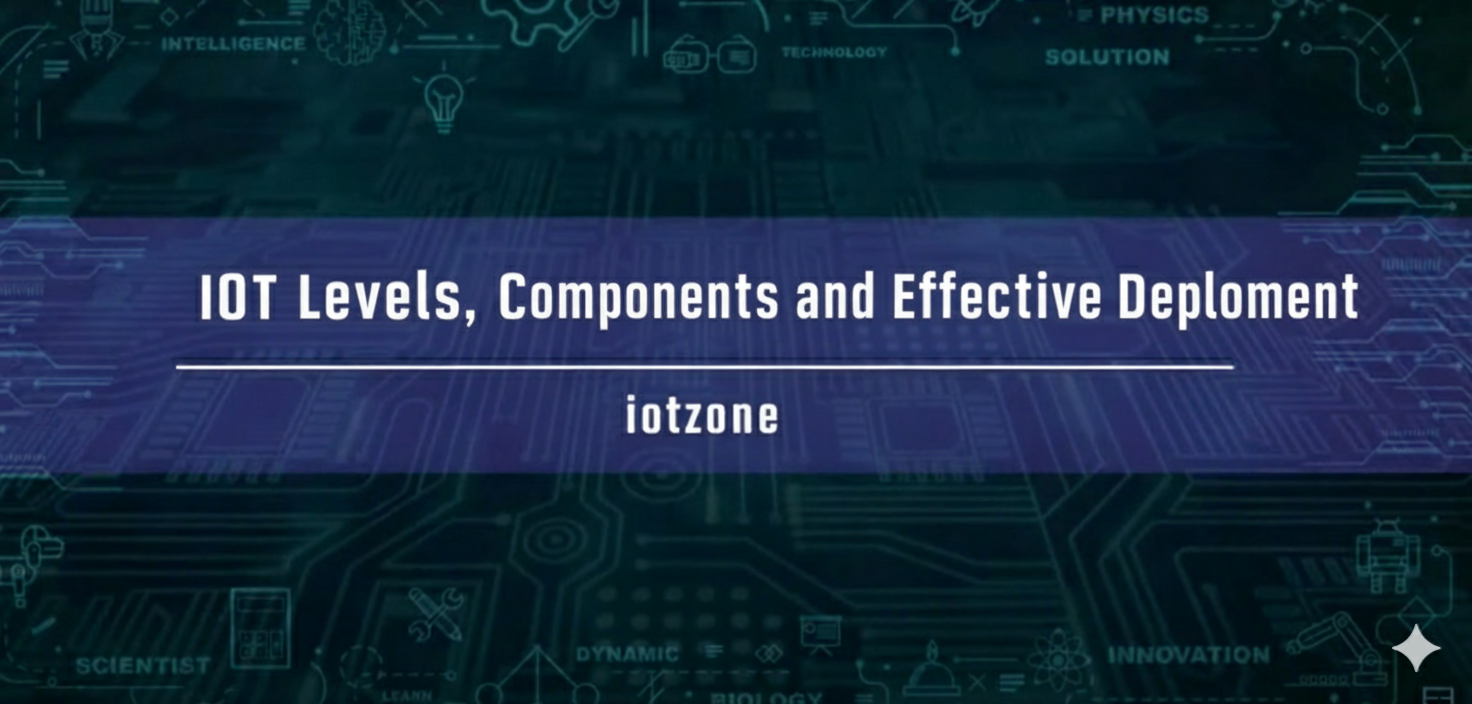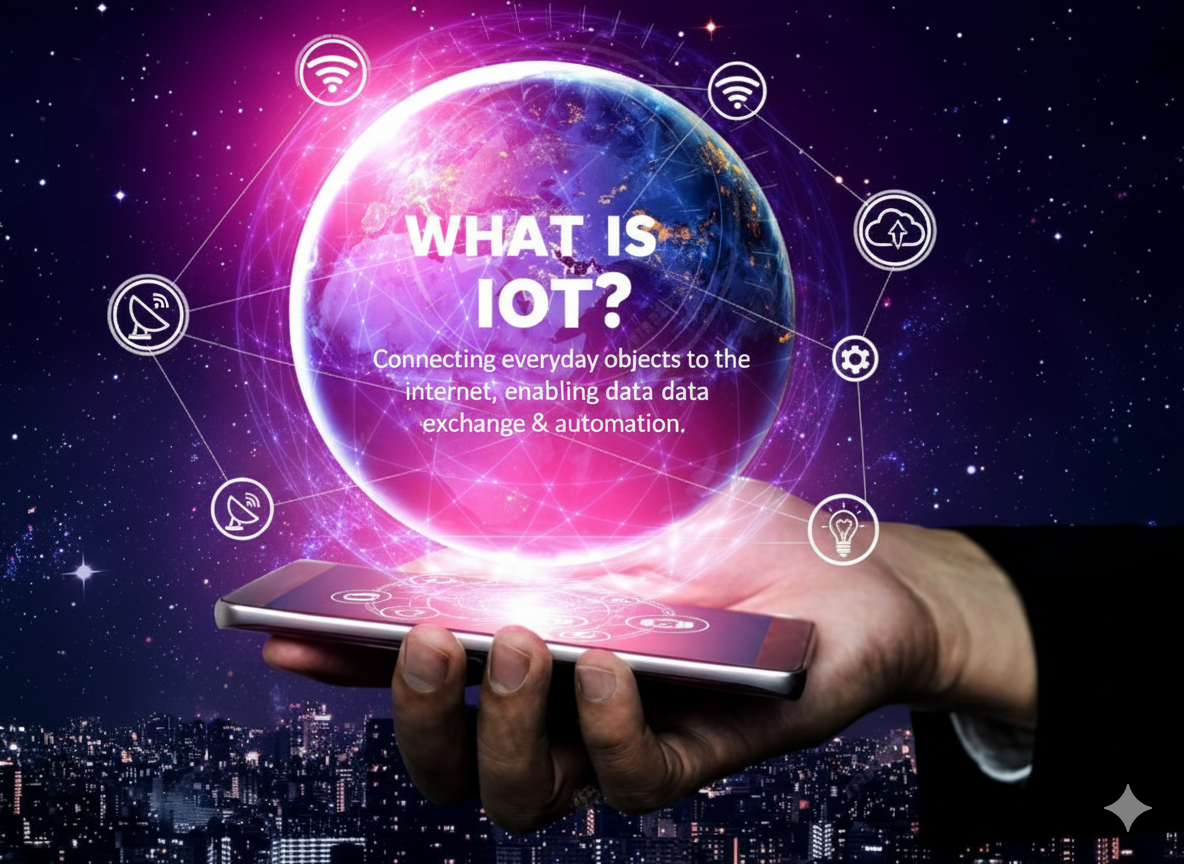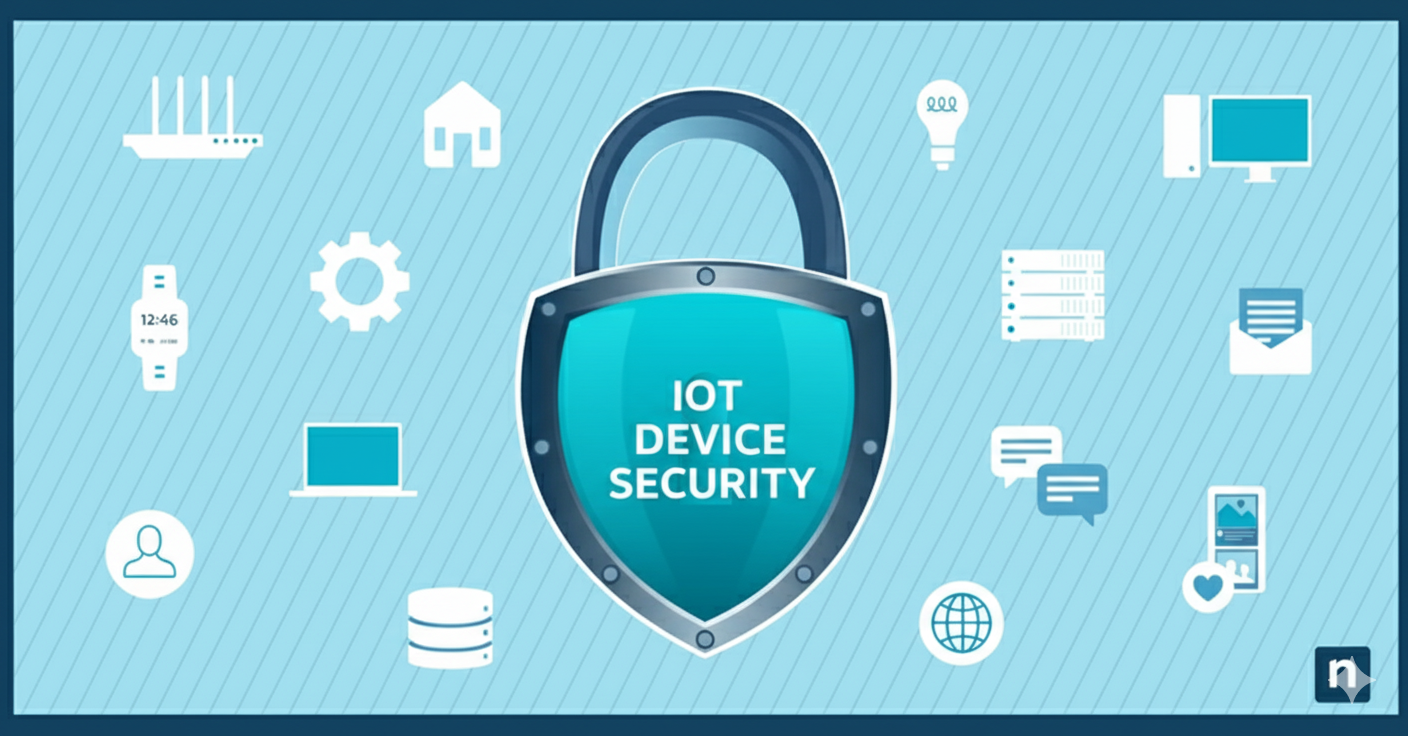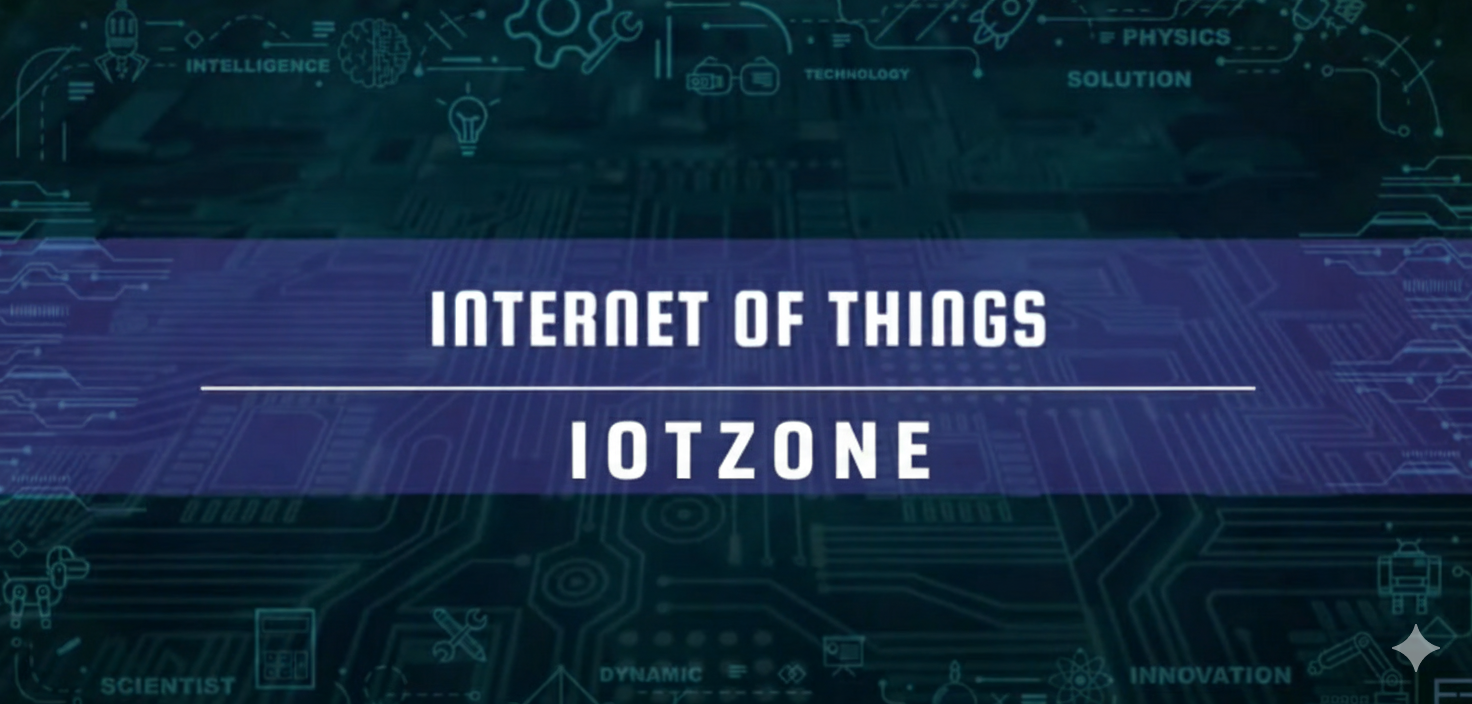The Potential of IoT: A Comprehensive Guide to Levels, Core Components, and Effective Deployment

Overview
In the world of modern technology, Internet of Things (IoT) is a groundbreaking concept that is shaping industries by connecting devices and enabling smarter decision-making. If you’re interested in learning about IoT and its deployment models, you’ve come to the right place. In this blog, we’ll explore the key IoT components and IoT levels, which are essential to understanding how IoT systems function and how they can be deployed.
Key IoT Components
Understanding the basic components of an IoT system is essential to comprehend how it works. Below, we explore each component in detail.1. Device/Node
The device, or IoT node, is the core component of an IoT system. It refers to the physical device that collects data from the environment through sensors and sends this data to the cloud. Devices can also perform actions based on commands received from the internet via actuators. These devices can range from simple temperature sensors to complex industrial machines.
2. Resource
The resource in IoT refers to the software elements inside the device that enable it to interact with the network. The software allows the device to process and store data collected from sensors or to control actuators. Essentially, resources facilitate communication between the device and the internet, ensuring that the data is transmitted or acted upon as needed.
3. Controller Service
A controller service is a service that runs on the device and interacts with web services. It allows the device to communicate with the internet, either to send data or receive commands. These controller services use protocols like HTTP (used for RESTful services) or WebSockets (for real-time bi-directional communication) to facilitate this interaction.
4. Database
The database stores the data generated by IoT devices. This can either be a local database on the device or a cloud-based database. The data is stored and then analyzed, often by applications that provide insights or perform actions based on that data. Cloud databases are generally preferred due to their scalability and accessibility.
5. Web Services
Web services in IoT allow devices to communicate with the internet and with each other. There are two main types of web services:
-
RESTful Services (HTTP): These are widely used for simple request-response communication, ideal for applications that don’t require real-time interactions.
-
WebSockets: Used for real-time, bi-directional communication, often used in applications like live monitoring systems.
6. Analytics
Once data is collected and stored, it is analyzed using advanced technologies. Analytics in IoT involves utilizing Artificial Intelligence (AI), Machine Learning (ML), and Big Data techniques to gain insights from the data. These insights can be used to optimize systems, improve performance, and make data-driven decisions.
7. Application
The application is where the user interacts with the IoT system. It provides an interface to view the data collected by IoT devices, control actuators, and configure system settings. Applications can be web-based or mobile-based, offering a convenient way for users to monitor and control IoT devices remotely.
Understanding the Six IoT Levels
IoT systems can be deployed in various ways, depending on the complexity and scale of the application. These deployment models are categorized into six levels, each offering different levels of complexity, cost, and computational requirements.Level 1: Single Node IoT System
The Level 1 IoT system is the simplest form of IoT deployment. In this level, a single device or node performs both sensing and actuation tasks. The data is either stored locally or not stored at all. This level is suitable for low-cost, low-complexity solutions where only basic monitoring is needed.
-
Key Characteristics:
- Single device (node).
- Low-cost and low-complexity solution.
- No data storage in the cloud.
- Simple communication protocols like HTTP.
Level 2: Single Node with Cloud Storage
Level 2 introduces the concept of cloud storage for storing data collected by a single node. While the complexity remains relatively low, data storage is now centralized in the cloud, and applications can access the data remotely. This level is ideal for systems that need cloud-based storage but don't require complex computational analysis.
-
Key Characteristics:
- Single node with cloud storage.
- No complex computational services required.
- Suitable for applications that don’t need real-time processing.
Level 3: Single Node with Intensive Cloud Computation
In Level 3, a single node continues to handle sensing and actuation, but now the cloud handles more intensive computational tasks. This level is ideal for applications that require more complex analysis or decision-making on the cloud. Data is stored in the cloud, and analysis is conducted remotely, providing more intelligent insights.
-
Key Characteristics:
- Single node with cloud storage and intensive computational capabilities.
- Suitable for applications with complex analysis needs.
- Data stored and processed on the cloud.
Level 4: Multiple Nodes with Cloud Communication
Level 4 introduces multiple nodes that interact with the cloud. In this setup, several devices work together, sending data to the cloud for processing. The complexity of the system increases, as more devices are involved. Communication between the devices and cloud is typically handled via REST services for low-complexity interactions or WebSockets for real-time communication.
-
Key Characteristics:
- Multiple nodes interacting with the cloud.
- Higher computational complexity compared to lower levels.
- REST or WebSocket communication protocols.
- Suitable for systems that need coordination between several devices.
Level 5: Multiple Nodes with Coordinator and Cloud Integration
In Level 5, there are multiple nodes connected to a coordinator (e.g., a gateway or router) that sends data to the cloud. This level is closer to Wireless Sensor Networks (WSN), with a central coordinator that manages the data flow between the devices and the cloud. Both REST and WebSocket protocols are used here, and the computational complexity is higher due to the larger volume of data.
-
Key Characteristics:
- Multiple nodes with a central coordinator.
- Higher complexity with advanced analysis.
- Used in systems like Wireless Sensor Networks (WSN).
Level 6: Fully Centralized Control with Multiple Nodes
Level 6 represents the most advanced IoT deployment model, where multiple nodes are controlled by a centralized controller. This controller manages all devices in the system and can provide real-time monitoring, control, and advanced analytics. This level is ideal for large-scale IoT systems that require the highest level of control, monitoring, and computation.
-
Key Characteristics:
- Multiple nodes controlled by a centralized controller.
- High computational complexity and real-time analysis.
- Suitable for large-scale IoT applications like smart cities or industrial IoT.
Conclusion: Choosing the Right IoT Level for Your Needs
Choosing the appropriate IoT deployment level depends on your specific requirements, including the number of devices, the complexity of data analysis, and whether real-time communication is necessary. By understanding the IoT components and deployment levels, you can design an IoT system that aligns with your needs—whether you're building a simple, cost-effective solution or a complex, large-scale IoT system.
If you're planning to implement an IoT system, it's crucial to assess your goals and resources carefully. With the right planning, IoT can revolutionize your processes, provide valuable insights, and improve overall efficiency.Administrator
Frequently Asked Questions
Common questions about The Potential of IoT: A Comprehensive Guide to Levels, Core Components, and Effective Deployment. Find answers to the most frequently asked questions.
User Reviews & Comments
Share your experience with this IoT Blog. Your feedback helps our community make informed decisions!
Share Your Experience
Help others by sharing your thoughts about this IoT Blog.
Related Blogs
Explore more IoT Blogs in the same category

What is the Internet of Things (IoT)?
Tutorials
The Internet of Things (IoT) connects everyday devices to the internet, enabling smart homes, healthcare, farming, and industries with automation, real-time monitoring, and data-driven insights.

IoT Security Risks and How to Protect Your Devices
Tutorials
Learn how to secure your IoT devices at home and office, reduce cyber risks, and protect privacy with best practices for a safer connected world.

IoT Components: Working of IoT, Sensors & Actuators, Role of IoT, IoT Cloud, IoT Analytics
Tutorials
Explore IoT components, working, sensors, actuators, IoT cloud, and analytics. Learn how IoT transforms data into insights, connecting devices for smarter and efficient solutions.
No Reviews Yet
Be the first to share your experience with this IoT Blog!